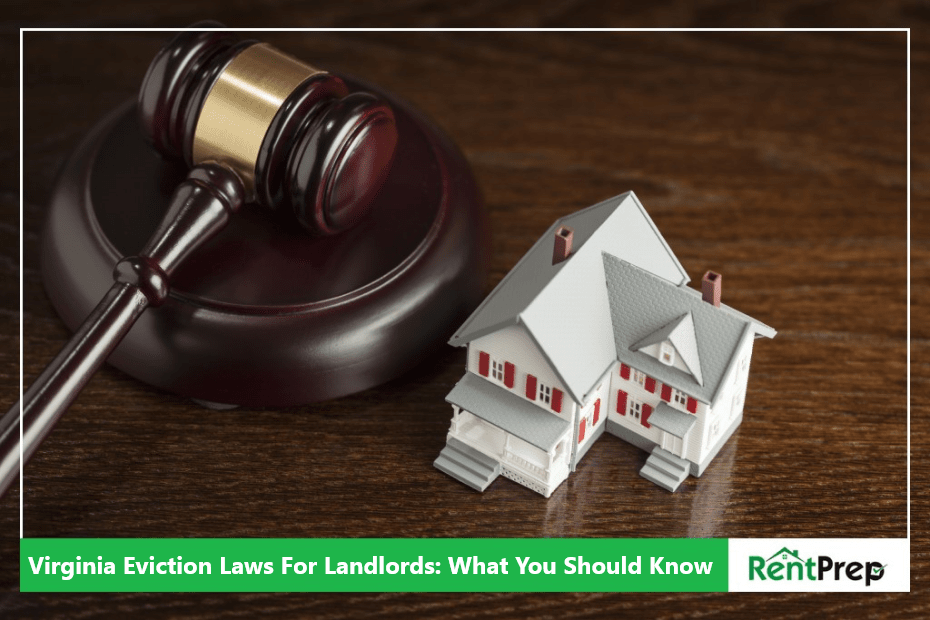
Every step of the property management process is important, right? While we would never disagree with that statement, we do feel that it’s especially important for landlords to understand the eviction process for their state just as well as, if not better, than they know everything else.
In Virginia, landlords need to know the special cases created by the state’s eviction laws. Some of the laws still mirror general eviction laws, but landlords must be careful to know the eviction process in VA to ensure that they get it right. If you make a mistake, your eviction could take two or three times longer than it should because you will have to start over.
And nobody has that kind of time to waste on simple mistakes!
Do you work in Virginia? Do you know the steps to evict a tenant in Virginia? If not, it’s time for you to learn more on this subject. Today, we’ll break down the ins and outs of Virginia eviction law so that you can feel confident in handling any eviction situations that might arise in your future.
A Table Of Contents For The Eviction Process In VA
- What Is Eviction?
- How Eviction In Virginia Is Unique
- Complete Eviction Process In VA
- Tenant Removal
- Virginia Eviction Laws: Tips To Follow
What Is Eviction?

First, let’s review what eviction is and when you might find yourself in a situation where you need to evict a tenant.
Eviction is a legal process through which you have a tenant removed from your property because they somehow violated or overstayed their lease. When a tenant breaks the lease rules or terms in specific and repeated ways, every state gives you as the property owner the right to take back control of your property through eviction.
But every state also does that differently!
Laws for landlords and tenants differ in every state because these laws are decided on the state level. While there are some similarities between the states’ rules, what matters most is that you are following the right rules for the state that you work in.
How Eviction In Virginia Is Unique
Virginia eviction laws are known for being somewhat unique when compared to other states nearby. If you’re new to the area or never had any experience with property management there, it’s essential that you know what areas have special requirements.
Previously, landlords would need to file a new eviction notice for every month of late rent due to the slowness of the court system. Thankfully, the laws are being changed to being more balanced and fair for both tenants and landlords.
The thing that you should really pay attention to is how long you have to wait before filing for eviction after giving notice to a tenant. This timing is a bit different than for other states, so this is something to keep in mind as you continue reading today’s eviction guide.
Complete Eviction Process In VA
Let’s get into the depths of the eviction process in VA and how it works. The basic steps are the same as in other states’ eviction processes.
Step 1: Give Notice
First, you’ll need to give notice to the tenant that you are thinking about evicting them. The type of notice that you give will depend on the reason for eviction, so you’ll need to think about that reason before you send any type of notice.
Let’s work through the different types of notices that you might need to use in Virginia:
Five-Day Notice To Pay Rent Or Quit
 This notice is used whenever the tenant fails to pay rent by its due date. Once the tenant receives this notice, they will have five days to pay rent or move out of the unit. If they don’t do either of these things, the landlord can continue to step #2.
This notice is used whenever the tenant fails to pay rent by its due date. Once the tenant receives this notice, they will have five days to pay rent or move out of the unit. If they don’t do either of these things, the landlord can continue to step #2.
Thirty-Day Notice To Fix Or Quit
Another type of notice is the thirty-day notice to fix or quit. This notice is used whenever some minor terms of the lease are violated (such as having an unauthorized pet or parking in the wrong area). While the eviction process will pause at this step for 30 days, the tenant only has 21 days to remedy the situation.
Thirty-Day Notice To Quit
If there is a major violation of the lease (major damage to property, hurting neighbors, etc.), the correct notice to use is the thirty-day notice to quit. After receiving this notice, the tenant must leave by the end of the thirty days or they will be evicted.
No Notice
If a tenant commits a crime or is putting the health and safety of anyone at risk by being at the property, they can be evicted without notice. Skip sending any type of notice and head straight to court to file an eviction lawsuit.
Other Situations
If you want to have a tenant end their lease or move out but you don’t have a legal reason for eviction, you will need to be patient in order to regain control of your property. After all, you signed a legal agreement to allow the tenant to live at the property until a specific date.
If working with a month-to-month lease, you must give the tenant at least 30 days of notice that they need to move out to end the tenancy. For leases that are one year or longer, you will need to wait until that tenancy period is over to ask the tenant to move.
Step 2: Unlawful Detainer Summons
Once you’ve sent tenants the eviction notice, you’ll need to play a bit of a waiting game.
The tenant will have the appropriate number of days (as indicated in the notice) to make changes or leave the property. For a five-day notice, they have five days to pay or leave. For thirty-day notices, you’ll need to wait for thirty days to pass.
If the time has passed, here’s what you can do:
- Gather proof of when and how you delivered the notice.
- File a summons for unlawful detainer in Virginia.
- Wait for the court to schedule a hearing with you and the tenant.
What is an unlawful detainer in Virginia? Unlawful detainer means that even though you have told the tenant that they need to either make changes or move out, they are illegally retaining control of your property. This gives you the right to file a lawsuit against them, and that is why you must go to court to file a summons.
Step 3: Trial Time
Once the court sets a hearing date, it’s time for you to start gathering all of the evidence that you have for the case. The tenant might be planning to argue about your claims, so it’s best to be completely prepared to prove your case.
The things that you should always bring with you include:
- Copy of the lease
- Rent payment receipts or records
- Proof of notice delivery
- Photos or video of the problem at the property
- Other documents which prove the problem is happening at the property
The judge will review the arguments of you and the tenant. If the judge rules in your favor, the tenant will have just 10 days to appeal before the decision will become final.
Step 4: Writ of Possession
Once you’ve won the trial, it’s time for you to get a writ of possession. You must ask the court for this document within one year of the eviction hearing’s conclusion. You might want to wait a few days to see if the tenant will leave on their own, but you can request the document at any time.
This legal document, once issued, will be sent to the Sheriff. Within 30 days, the Sheriff will go to the property to execute the physical eviction of the tenant from your property. And then, finally, you’ll have control of your property back!
Step 5: Possession Removal
After eviction, landlords are often stuck with a house full of things that don’t belong to them. Some states require that landlords hold onto these items for up to a year to ensure that the tenant has a chance to get them back.
Virginia, however, doesn’t have such a relaxed policy.
There are two ways that you can handle possession removal.
It is illegal for a landlord in Virginia to attempt to force a tenant to move out of a rental unit, and the tenant can sue the landlord for trying. Illegal Eviction Procedures in Virginia has more information on illegal evictions.
- 24-Hour Notice
When you initially give an eviction notice to the tenant at the beginning of this process, include a statement about the tenant’s possessions. This is known as a 24-hour policy. This policy lets the tenant know that any property left behind after they leave the rental will be considered abandoned after 24 hours. - 10-Day Notice
If you didn’t include any type of statement with the original eviction notice, you are required to wait 10 days to do anything with the tenant’s belongings and you must send the tenant a 10-day notice letting them know that anything they do not claim will be removed.
Landlords are then free to dispose of or sell the abandoned property. Any money made can be used to pay off the tenant’s owed debts to you for rent, repairs, and the cost of removal, but any remaining profit must then be treated like a security deposit and returned to the tenant.
A Final Note About Tenant Removal
Remember that you should never try to physically remove a tenant from a property by yourself. The reason that the writ of possession is such an important part of the eviction process is because a law enforcement officer must be the one to enforce the actual removal of the tenant.
Trying to remove the tenant yourself will only lead to more problems and trouble!
If you want to avoid the issue of eviction altogether, we recommend improving your screening processes when choosing tenants. Many landlords are more focused on getting their properties filled quickly than they are on choosing great tenants, and that is a critical error. Focus on choosing the right tenants, and your bottom line will reward you.
Virginia Eviction Laws: You Can Do It!
Don’t let the eviction laws currently enacted in Virginia make you feel stressed about the overall process. If you break down the steps of the process to work through it with focus and care, you’ll find yourself at a successful resolution in no time.
Remember:
- Choose the right eviction notice type for evictions in VA. Send it out as soon as possible.
- Keep proof of everything about your rentals just in case.
- Never try to remove a tenant from a property yourself – use the Sheriff!
You can handle eviction laws in VA like a boss. All you needed is this quick guide!

